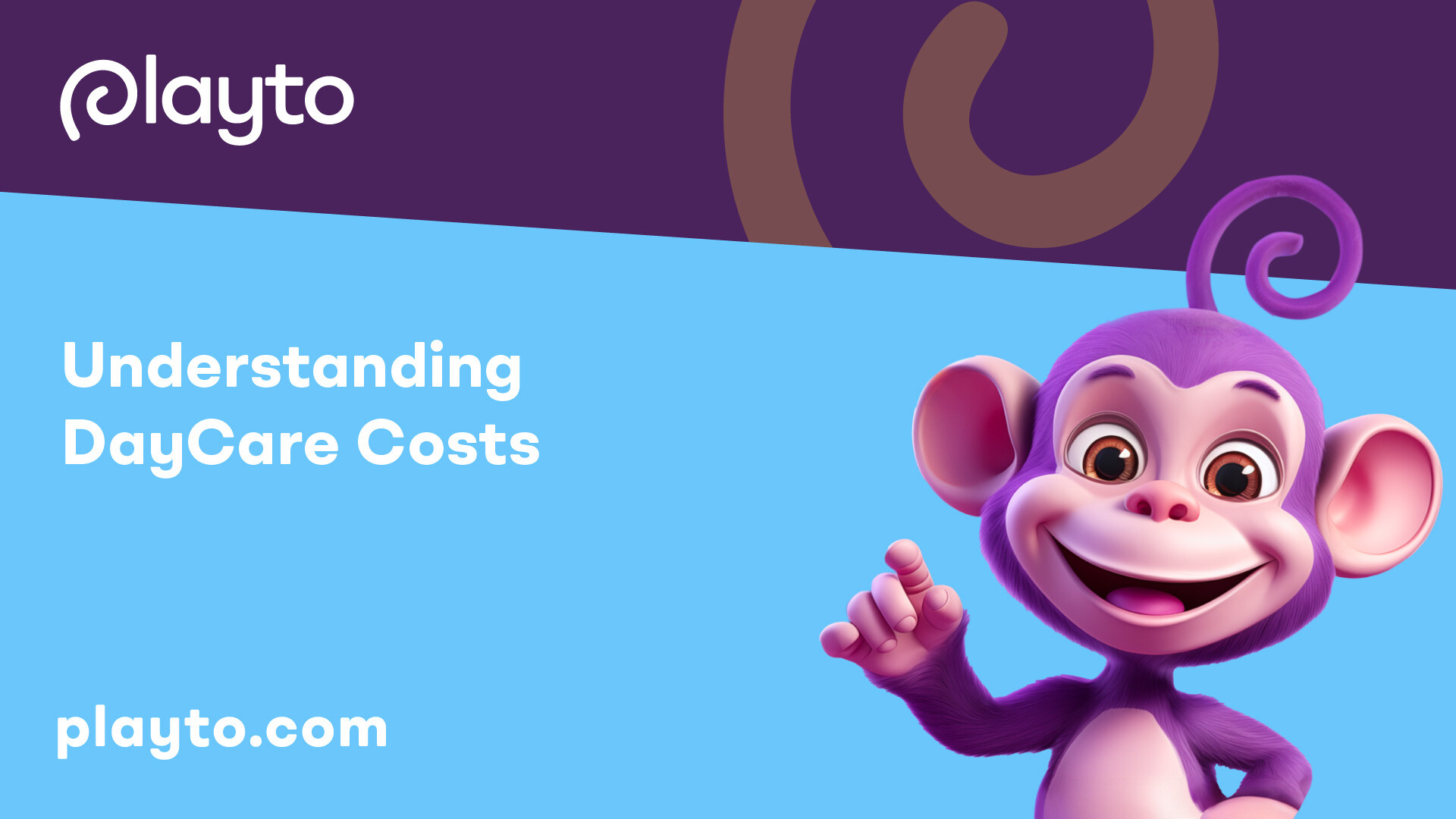
Understanding Daycare Costs
When it comes to understanding daycare costs, it's crucial to consider the significant impact these expenses can have on family budgets. Child care costs in the United States often surpass other essential expenses like housing, food, and even college tuition, making it a substantial portion of a family's financial planning [1]. Families in New York, like many others across the country, face the challenge of balancing quality care for their children with the financial implications it brings.
Impact on Family Budgets
For many families, child care costs can be a major factor in shaping their financial decisions and lifestyle. Nearly all parents have had to make significant adjustments to their work, life, or finances to afford child care. This can include seeking help from family and friends, adjusting work schedules, or exploring financial assistance options. It's essential for families to proactively plan for child care expenses to ensure they can provide a safe and nurturing environment for their children while maintaining financial stability.
Assistance Programs Available
To alleviate the financial burden of child care costs, there are various assistance programs available to families. These programs encompass a range of options, including government initiatives, local and provider-specific assistance, workplace and school-related programs, as well as specific programs for Native Hawaiian, Native Alaskan, and American Indian families [1]. Additionally, families may be eligible for tax credits such as the Child and Dependent Care Tax Credit, which provides financial support to individuals who are paying for child care to enable them to work or seek employment.
Parents must explore all available resources to determine the most suitable support options for their specific circumstances. With proper planning and awareness of available assistance, families can navigate the challenges associated with daycare costs more effectively and ensure that their children receive high-quality care without compromising their financial well-being.
Economic Insights into Daycare
When it comes to running a daycare business, understanding the economic landscape is crucial. This section delves into the industry worth of daycare establishments, including payroll costs, and operational expenses that contribute to the overall financial dynamics of the daycare sector.
Industry Worth and Payroll Costs
Childcare workers play a vital role in the daycare industry, with their median pay in 2021 reported at $27,490 per year or $13.22 per hour, shedding light on the typical payroll costs for daycare businesses. The size of the daycare establishment can significantly impact the payroll expenses. For instance, daycare businesses with less than five employees had an average payroll of just under $40,000, while those with five to nine employees averaged around $124,000 in payroll costs.
Operational Expenses for Daycare
Aside from payroll costs, operational expenses are a significant component of running a daycare. For a small center-based daycare accommodating 16 children, leasing costs can amount to at least $2,000 a month, with higher costs in expensive cities, serving as a noteworthy expense for daycare businesses operating in commercial spaces. These operational expenses encompass rent, utilities, insurance, supplies, and maintenance, all of which contribute to the overall cost of running a daycare facility.
Understanding the economic insights into the daycare industry is essential for daycare providers, policymakers, and parents alike. By grasping the financial elements such as industry worth, payroll costs, and operational expenses, stakeholders can make informed decisions to ensure the sustainability and quality of childcare services. For more related topics, explore our articles on daycare and early literacy development and handling daycare challenges like a pro.
Typical Childcare Costs
For families in New York, gaining a comprehensive understanding of daycare costs is essential for budget planning. Knowing the average monthly rates for different age groups and the enrollment fees, among other financial considerations, can help make informed decisions regarding childcare expenses.
Average Monthly Rates for Different Age Groups
In the United States, daycare costs can vary based on the age group of the child. According to Brightwheel, the average monthly cost for center-based toddler child care was around $1,096 in 2021. In comparison, the average monthly cost for center-based infant care was approximately $1,324 in the same year, representing a 21% increase over toddler care costs.
When looking specifically at New York, the investment in early childhood care and education is notable. The average annual cost of infant care in New York is reported to be $19,584, emphasizing the commitment to high-quality childcare services for the youngest population. Additionally, the monthly cost for care for a 4-year-old child in New York averages around $16,415, showcasing the range of expenses families may encounter when seeking daycare services.
Age GroupAverage Monthly Cost (US)Average Monthly Cost (New York)Infants$1,324$1,632Toddlers$1,096-4-Year-Olds-$16,415
Enrollment Fees and Other Financial Considerations
When considering daycare costs, it's important to factor in additional expenses beyond the monthly rates. Enrollment fees, supply costs, meal fees, and extracurricular activities can all contribute to the overall financial investment required for childcare.
In Massachusetts, known for having one of the highest average child care costs in the country, families face substantial financial commitments. Annual infant care costs in Massachusetts can reach up to $24,005, while care for 4-year-olds may amount to $18,760 per year. Families seeking licensed child care programs can explore options through the Department of Early Education and Care (EEC) in Massachusetts.
Understanding the complexity of daycare costs, with considerations for age groups, enrollment fees, and state-specific variations, enables families in New York to make informed decisions regarding their childcare needs. By exploring available financial assistance programs and taking advantage of tax credits and grants, families can navigate the financial landscape of daycare costs with greater ease and confidence.
State-specific Costs of Daycare
When it comes to understanding daycare costs, the financial burden varies significantly depending on the state in which families reside. Let's delve into the cost breakdown for daycare in California, New York, Massachusetts, and Washington.
Cost Breakdown for California
In California, families face significant expenses when it comes to childcare. The annual cost for caring for a single infant averages around $19,547, while the average cost for a 4-year-old child is approximately $14,396. Shockingly, nearly 93% of California's 40 million residents struggle to access affordable child care services, posing a considerable challenge to families in the state.
Cost Breakdown for New York
New York also presents high daycare costs, with the average annual cost of infant care amounting to $19,584. Additionally, the monthly cost for caring for a 4-year-old child averages around $16,415. To support families, New York heavily invests in Early Head Start programs and offers partnership opportunities and grants to child care providers who meet the program's performance standards.
Cost Breakdown for Massachusetts
Families in Massachusetts face some of the highest childcare costs in the country. The average annual cost for infant care in the state skyrockets to $24,005, while caring for a 4-year-old child can reach up to $18,760 per year. To assist families in finding quality childcare, Massachusetts offers licensed child care programs through the Department of Early Education and Care (EEC).
Cost Breakdown for Washington
Washington state also presents considerable daycare expenses. The average annual cost for infant care in Washington totals around $20,370, with child care for a 4-year-old child averaging approximately $15,720 per year. To aid families in accessing childcare services, the state offers child care subsidies through the Working Connections Child Care (WCCC) program.
Understanding the state-specific costs of daycare enables families to make informed decisions and plan their budgets accordingly. It's essential for families to explore available daycare and early literacy development assistance programs and resources to alleviate some of the financial strains associated with childcare costs.
Federal and State Child Care Assistance
When it comes to alleviating the financial burden of child care, there are various programs that provide assistance to families. These programs aim to support families in affording child care costs, ensuring that parents can work or pursue educational opportunities. Additionally, tax credits play a crucial role in reducing the overall cost of child care for qualifying families.
Programs and Eligibility Criteria
State and federal governments offer a range of child care assistance programs to eligible families. These programs may have different names such as vouchers, fee assistance, or subsidies. Eligibility criteria vary but generally focus on income levels and the need for child care to work or attend school. Programs like Early Head Start and Head Start cater to children from birth to 5 years old, providing essential services to families with limited financial resources.
Families with incomes at or below the poverty level may qualify for Head Start services, with an emphasis on serving children with disabilities, those in foster care, experiencing homelessness, or receiving public assistance. Understanding the eligibility criteria for these programs is essential for families seeking financial support for child care.
Tax Credits and Financial Support
Tax credits can significantly aid families in offsetting the cost of child care. By reducing the amount of tax owed or potentially resulting in a tax refund, tax credits serve as a valuable resource for families facing child care expenses. The Child and Dependent Care Tax Credit specifically targets individuals who are paying for child care to enable them to work or actively seek employment.
State and federal child care assistance programs, combined with tax credits, form a crucial support system for families navigating the challenges of affording quality child care. By understanding the available programs, eligibility requirements, and tax credit options, families can make informed decisions to manage child care costs effectively.
Challenges and Solutions in Child Care
As families navigate the complex landscape of child care, they often encounter affordability issues that can significantly impact their financial well-being. Nearly all parents have had to make substantial adjustments to their work, life, or finances to afford child care, with many seeking support from family and friends to manage the costs.
The sudden termination of pandemic-era funding in September 2023 had profound consequences on the child care sector, leading to the loss of jobs and spots at child care facilities. This upheaval affected over 70,000 child care providers and resulted in closures, reduced enrollments, and increased fees. A staggering 79% of parents anticipate being impacted in 2024, with more than half expecting to spend $600 or more per month on child care, translating to additional costs of over $7,000 annually.
To alleviate the financial strain on families, various federal and state programs, such as the Child and Dependent Care Tax Credit (CDCTC) and the Child Tax Credit (CTC), offer support for child care expenses. Families can claim up to $600 in care-related costs for one child or $1,200 for two or more children with the CDCTC. Additionally, the CTC provides a tax credit of up to $2,000 per qualifying dependent under 17 years old, potentially refundable through the Additional Child Tax Credit (ACTC).
Impact of Recent Policy Changes on Child Care Sector
Recent changes in policies and funding have had a profound impact on the child care sector. The abrupt discontinuation of financial support in 2023 exacerbated existing challenges, causing widespread repercussions. These changes led to job losses, reduced capacity at child care facilities, and increased financial burdens on parents.
The repercussions of these policy shifts have been felt across the industry, with providers struggling to sustain operations amidst dwindling resources. As a result, families are faced with fewer child care options, increased fees, and the need to reassess their child care arrangements.
Moving forward, policymakers and industry stakeholders must work collaboratively to address the immediate challenges facing the child care sector. By implementing sustainable funding mechanisms, promoting workforce development, and enhancing access to affordable child care, it is possible to mitigate the adverse effects of recent policy changes and ensure the availability of high-quality child care for families in need.
